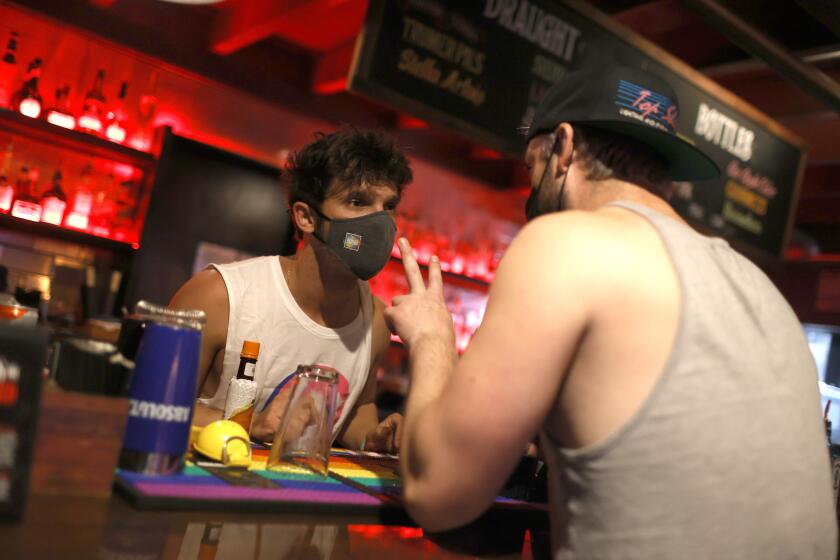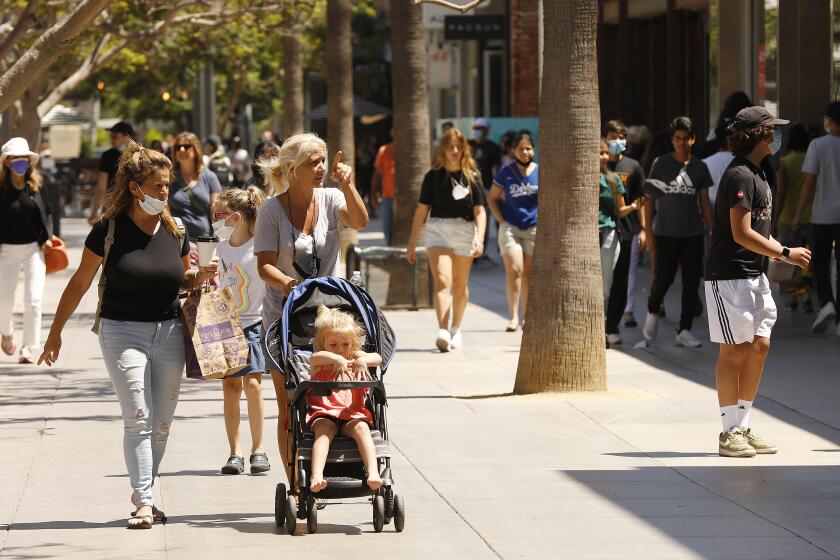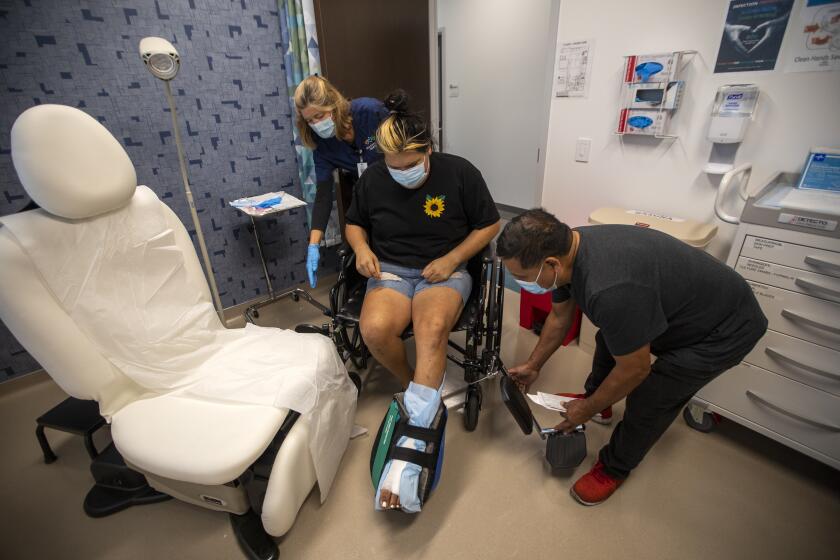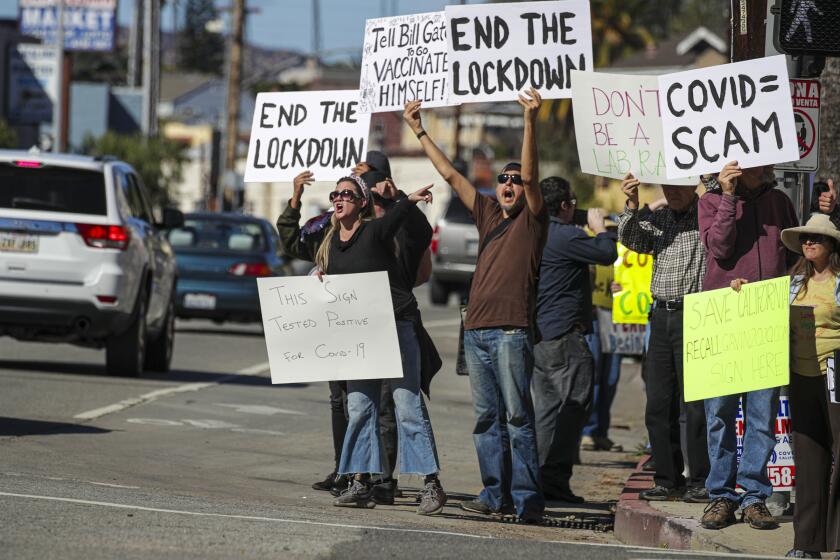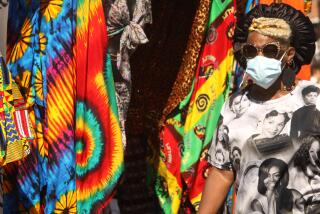Coronavirus surge in L.A. County shows some signs of slowing, but dangers remain
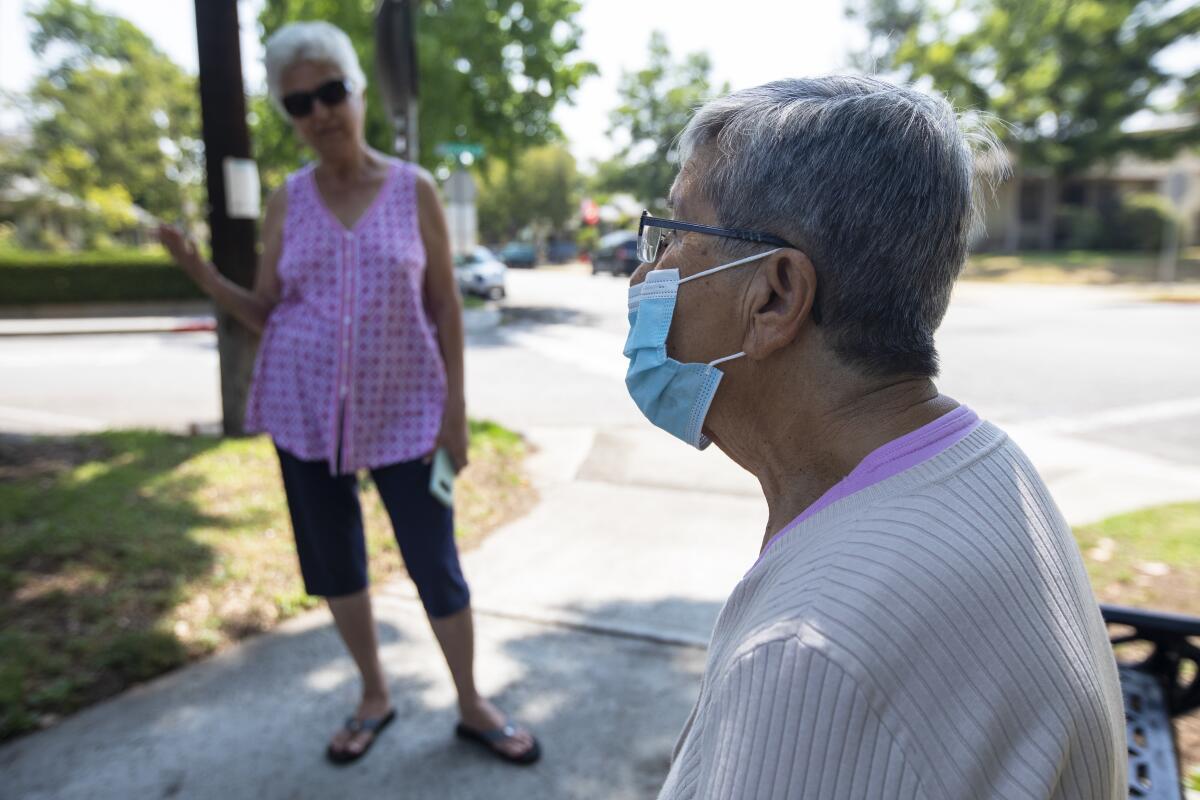
- Share via
Coronavirus cases are still on the rise in Los Angeles County, but the rate of increase has slowed — sparking hope that interventions such as the region’s renewed mask mandate might be starting to pay dividends.
The county began requiring everyone, even those who are fully vaccinated against COVID-19, to wear masks in indoor public spaces in mid-July. Though it’s still early, Public Health Director Barbara Ferrer said there are promising signs that the order may be having the intended effect.
The latest surge is showing signs, maybe not of letting up, but of leveling off somewhat.
L.A. County seemed like an outlier last month when it imposed new mask requirements in public places. Now more California counties are following suit.
Ferrer said L.A. County saw a 22% rise in reported cases the week that ended Sunday, compared with the prior week. The rest of the state saw a 57% jump over that period.
“One of the big differences between us and other counties was we were the only county at that time that mandated indoor masking,” she told reporters Thursday.
“It’s hard to say with 100% certainty that this was the factor that tipped us to have a slightly better slowing of spread than other places, but I know for sure it contributed, just because the data [are] really conclusive on the importance of masking indoors and how that does, in fact, reduce transmission.”
Over the week ending July 22 — a period that includes the first few days of the new mask mandate — L.A. County reported an average of roughly 1,940 new coronavirus cases per day, an increase of 80% from the week before, according to data compiled by The Times.
The latest maps and charts on the spread of COVID-19 in Los Angeles County, including cases, deaths, closures and restrictions.
The daily case average for the week ending Thursday was significantly higher, 3,156, but a more modest 27% jump from the previous week.
“What we’re seeing now is a much smaller increase in our cases over a couple of weeks, which is what we’re hoping for 10 days after implementing an effective public health measure,” Ferrer said.
But, she cautioned, “we’re still experiencing a significantly high case rate,” making it all the more important for residents to take steps to protect themselves and those around them.
Those individual decisions, Ferrer said, play a significant role in the course of the pandemic.
“I think many people took additional precautions and that contributed, as well,” she said. “I think people avoided very crowded situations. I think some people and some businesses, they changed practices to create as much safety as possible.”
L.A. County has taken aggressive actions to fight the Delta variant, and officials in the county and city are considering more. How it will affect you.
L.A. County was the first large area of the state to reimpose a public indoor mask mandate as it became clear that the highly infectious Delta variant of the coronavirus was beginning to widely spread.
That order has since been replicated elsewhere across California, including much of the Bay Area.
But in the weeks since, governments and private sector employers have increasingly turned not just to masks, but new vaccine requirements.
California ordered Thursday that healthcare workers statewide must be fully vaccinated against COVID-19 come early fall.
The new mandate applies to employees in hospitals, skilled nursing facilities, clinics, doctor’s offices, hospice facilities, dialysis centers and most other healthcare settings, and stipulates that they complete their inoculation regimen by Sept. 30.
The mandate applies to employees in hospitals and skilled nursing facilities, as well as most other healthcare settings, and stipulates that they complete their COVID-19 inoculation regimen by Sept. 30.
Only limited religious or medical exemptions from the vaccine requirement are allowed.
More public agencies and private employers have announced they will require workers show either that they’ve been inoculated against COVID-19 or that they’ve recently tested negative, as a regular part of doing business.
Whether because of the looming prospect of mandates, or concerns surrounding the Delta variant, the state’s vaccination pace has picked up — halting, at least temporarily, a months-long slide.
From July 25 to 31, providers throughout California administered an average of nearly 44,000 first vaccine doses per day: a 41% increase from two weeks ago, Times data show.
Legislation would make it illegal to obstruct someone from getting a COVID-19 shot, or any vaccine. Some free speech experts say it goes too far.
Someone is considered fully vaccinated two weeks after receiving their final dose, meaning those who have only recently rolled up their sleeves still have a ways to go before they reach maximum protection.
“It is [a] tremendously important time for people to get vaccinated, so we’re grateful for these signs of increased vaccination uptake,” Ferrer said.
More to Read
Sign up for Essential California
The most important California stories and recommendations in your inbox every morning.
You may occasionally receive promotional content from the Los Angeles Times.
